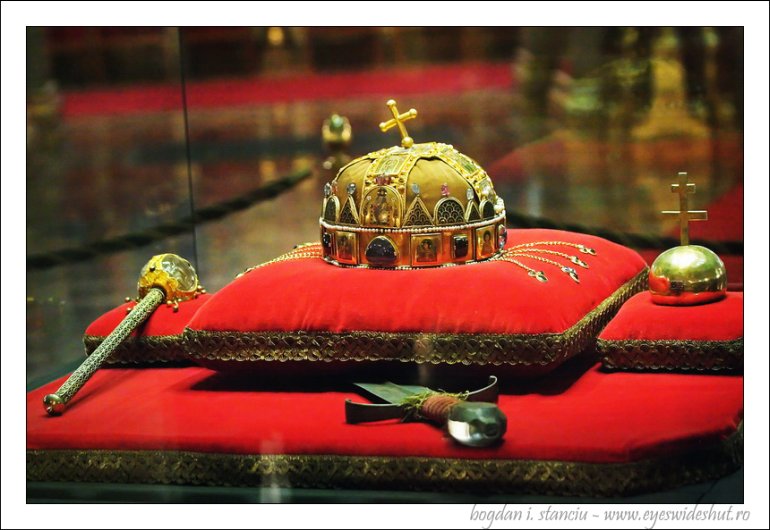|
Ismertető szöveg: Orszaghaz, or the the Hungarian Parliament Building is situated in Kossuth Lajos Square, on the bank of the Danube, in Budapest. It is the largest building in Hungary, and the second largest Parliament in Europe after the Romanian Parliament Palace in Bucharest.
Construction was started in 1885 and completed in 1904, but the building was inaugurated on the 1000th anniversary of the country, in 1896.
It was built in Gothic Revival style with symmetrical facade and a central dome. The building is 268 meter long, 123 meter wide in the middle, 96 meter high with the dome. Its area is 18 000 sqm.
The facade includes 90 statues, while the interior walls are decorated with 152 statues, county's and city's coat of arms, and local flower motives. Around 40 kilogram of 22-23 carat gold was used for decorations.
The building has 10 courtyards, 27 doors, 29 staircases and 13 elevators and 691 rooms. In addition to planetary, conference and session rooms, it includes over 200 offices. The symmetrical arrangement of the building is designed to serve a double chamber system, similar to the Capitol in Washington. The huge hexadecagonal dome hall in the middle was designed for joined sessions: the Lower House (today the National Assembly meets here) and the Upper House (until 1945).
16 statues of Hungarian kings and rulers, along with their coat of arms, ornate the walls: St. Istvan, St. Laszlo, Kalman Konyves, Andras the 2nd, Bela the 4th, Lajos Nagy, Janos Hunyadi and Matyas Hunyadi, kings of Hungary, followed by Transylvanian monarchs: Istvan Bathori, Istvan Bocskai, Gabor Bethlen and Gyorgy Rakoczi the first; and three Habsburg rulers: III. Karoly the 3rd, Terezia Maria and Lipot the 2nd. Wall paintings depict historical events, statues represent allegoric figures of honoured virtues.
In the Dome Hall of Parliament the authorities have placed, uner protective glass, the Holy Crown of St. Stephen, the founder of Hungarian state. The artifact was moved here from the National Museum in an attempt to elevate the Crown as national symbol from a museum relic to a living icon.
|




